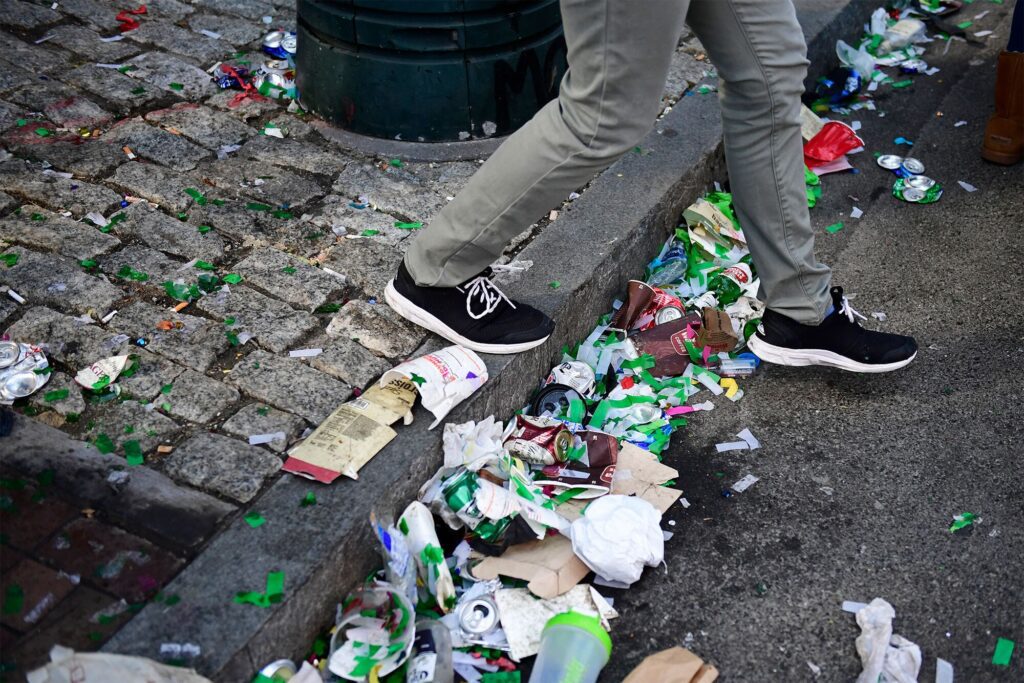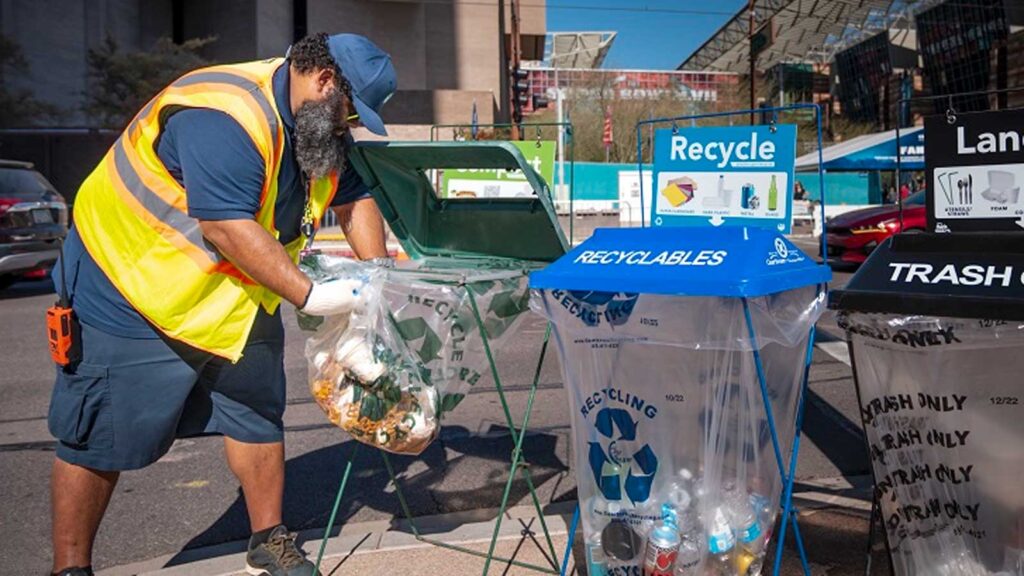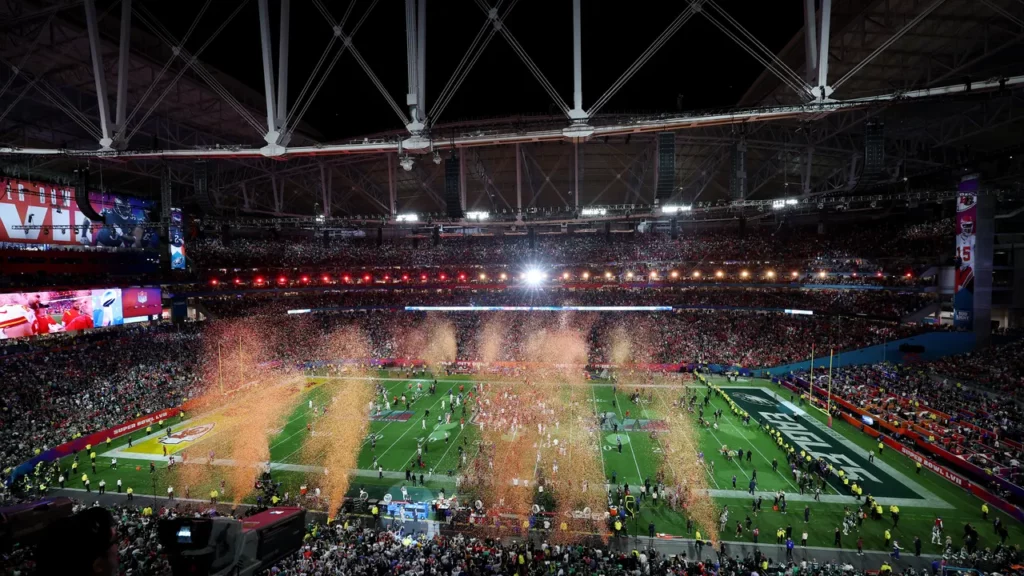Live events are a major producer of single-use waste, but many are adopting reuse systems as the solution.

The Super Bowl and other live events produce millions of single-use waste every year that end up in our environment. But sports and concert venues, as well as municipal leadership, continue to take promising steps towards embracing the reuse movement and reducing their waste footprint.
The impact of the Super Bowl and Live events
It’s that time of year again! Planning and gathering for one of the biggest events and entertainment spectacles in professional sports– the Super Bowl. As we all assemble our game time snack menus and prepare for Usher’s throwback performance, hundreds of thousands of people are descending upon Las Vegas to enjoy the festivities live.
But in the excitement of such large-scale live events, we can often lose ourselves in the anticipation or the pageantry, and overlook the environmental impacts resulting from these celebrations.
From disposable plastic cups full of beer to takeout meals in single-use containers, there’s no shortage of waste produced by most of the activities associated with big events.
Allegiant Stadium, where the Super Bowl will be held this year, has a capacity of 65,000 people. If each attendees orders one drink in a plastic cup, that results in 65,000 single-use plastic cups as waste. That’s a lot of plastic waste…and it doesn’t take into account the fact that most people will likely be having more than one drink over the course of the game.
The 30 NFL stadiums across the US produce an estimated 18,293,088 cups over the course of one season, which is enough cups to fill a staggering 33 football fields.


Moving in the right direction
What’s promising about the live event space is that change is happening to ensure our favourite championships, tournaments, concerts, and festivals have a pathway to address waste.
Last year, the City of Phoenix, Arizona set a goal to achieve zero waste at their public Super Bowl events in the downtown core. The City diverted 92% of waste away from landfill by introducing Zero Waste Ambassadors that helped visitors sort their materials appropriately, as well as new “depackaging” technology that separated food waste organics from its non-compostable packaging.
The PGA’s Waste Management Open, also held in Phoenix, was able to divert 100% of materials from landfill in 2022. The tournament sent 170 pounds of wine and liquor bottles to be transformed into reusable glasses through a local vendor. These are great initial steps to reduce the amount of material ending up in landfills.
However, event holders and venues could still do more to tackle plastic waste by introducing widespread systems that prioritize reduction and reusability. How?


The Adoption of Reuse Programs
While recycling and waste sorting are certainly improved options for waste management after we’ve used disposable packaging and products, reducing that waste in the first place is far more impactful.
The NBA’s Portland Trail Blazers and the Moda Center have been real leaders in this space, expanding the Rip City Reuse program to utilize Bold Reuse’s returnable drinkware at no additional cost to attendees. This program is the first of its kind across professional sports venues in the US and has eliminated more than 168,000 single-use cups this season alone.
The reduction-first movement extends to music venues and festivals as well with events such as Cali Vibes in California, which with r.World’s reusable cup system last year avoided:
- 127,000 single-use cups,
- 2,100 pounds of plastic waste,
- 14,000 pounds of CO2
In Canada, reuse service providers such as Sharewares based out of Vancouver offer similar services for reusables at events – providing return bins, and signage to make reuse simple for attendees and staff.
Policies for Single-Use waste
Policy is also a powerful tool to advance a reduction-first lens and emphasize the potential of reusable items such as cups and food serviceware.
Our Plastic-Free Events Policy program works with municipalities to develop policy solutions and encourage those planning or participating in live events to embrace reuse systems and recognize the benefits (environmental, economic, and social) of choosing to reuse.
This type of policy is already gaining traction across North America. Mind Your Plastic is currently working with the City of Nanaimo, BC to develop a policy that will introduce reusable solutions and waste reduction at events.
In Seattle, Washington, the city is also working on reuse initiatives, connecting service providers, restaurants, and entertainment venues to install reusable products and eliminate 12,000 tonnes of plastic packaging per year.


Reuse programs are incredibly important in eliminating plastic pollution, and events are a great place to start.
When we consider how much single-use waste an event like the Super Bowl can produce, we should reflect on how the disposable systems we’re accustomed to can shift to prevent unnecessary waste.
So enjoy this Super Bowl weekend! Whether you’re a fan of the sport, the food, the halftime show, or a Swiftie hoping Taylor makes it back from Tokyo in time, it’s good to be conscious of the waste produced by live events and how we can be a part of the change.
Passionate advocacy often starts in spaces and communities that we cherish the most. If you participate in live events, and want them to be more sustainable, be sure to make your voice heard and advocate for plastic-free initiatives!


Michelle Brake, Author
Programs and Policy Manager


Erica Wong, Editor
Marketing and Communications Specialist
Follow for more like this!
